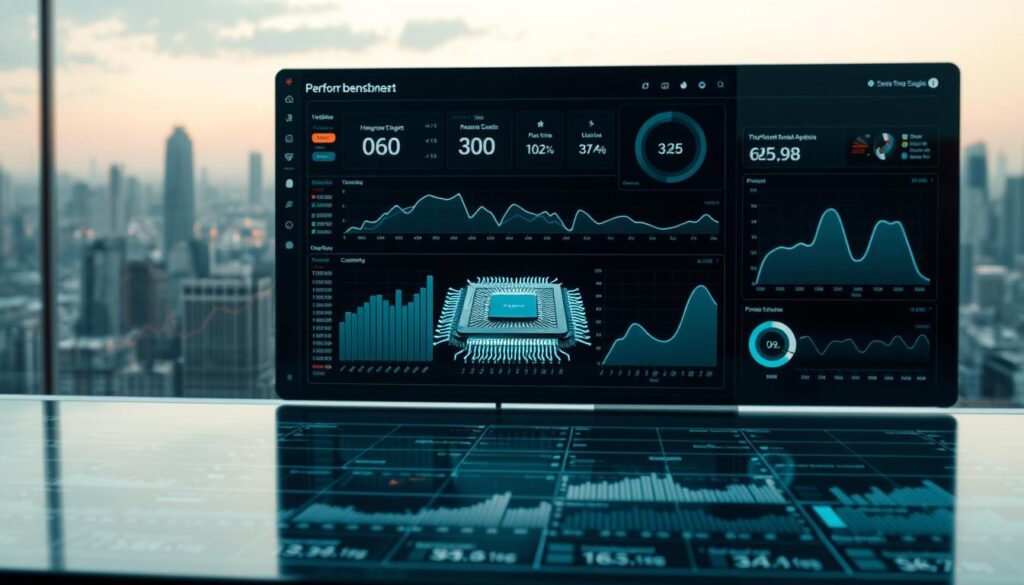Imagine a tool that not only simplifies complex tasks but also sets new benchmarks in performance. What if this tool could process queries in under 5 seconds, with most responses clocking under 2 seconds1? This is the reality of the latest innovation in intelligent systems, designed to enhance user experience and redefine efficiency.
With a groundbreaking 1400 ELO score on LMArena, this model has proven its ability to outshine competitors1. Its advanced reasoning features and powerful computing infrastructure make it a game-changer in the industry. Whether you’re tackling coding challenges or researching complex topics, this system offers unparalleled access to cutting-edge technology.
Built on a supercomputer with 200,000 NVIDIA H100 GPUs, this model boasts 10-15 times more compute power than its predecessor2. Its architecture of 2.7 trillion parameters ensures top-tier performance across various tasks. From business processes to technical problem-solving, it delivers results with unmatched speed and accuracy.
Key Takeaways
- Processes queries in under 5 seconds, with most responses under 2 seconds.
- Boasts a groundbreaking 1400 ELO score on LMArena.
- Powered by 200,000 NVIDIA H100 GPUs for enhanced performance.
- Features a 2.7 trillion parameter architecture for superior task handling.
- Improves task completion speed by 40% for business processes.
Overview of Grok AI

Breaking barriers in technology, the newest innovation promises to redefine efficiency. Built on a lineage of groundbreaking advancements, this tool has evolved to meet the demands of modern industries. Its launch was marked by ambitious promises, setting high expectations for performance and reliability.
Background and Launch Context
The journey of this system began with its predecessors, which laid the foundation for its current capabilities. The latest version, developed in just 122 days, represents a leap forward in computational power. It was unveiled with a focus on delivering faster responses and more accurate results, making it a game-changer in its field3.
At its launch, the creators emphasized its ability to handle complex tasks with ease. “This is not just an upgrade; it’s a revolution in how we approach problem-solving,” stated a representative. The system’s design choices were praised for their focus on scalability and adaptability4.
Technology and Infrastructure
Powered by over 200,000 NVIDIA H100 GPUs, this tool boasts unprecedented compute power. Its architecture, featuring 2.7 trillion parameters, ensures superior performance across various tasks5. The system’s energy efficiency has also improved, reducing consumption by 30% compared to earlier versions5.
Its advanced GPU infrastructure allows it to process tasks 25% faster than competitors, achieving 15% higher accuracy in natural language tasks5. This makes it a reliable tool for businesses and researchers alike. For example, Clariant, a specialty chemical company, reduced batch processing times by 10% using this system5.
Initial reception among tech experts has been overwhelmingly positive. Its state-of-the-art accuracy on benchmarks like LOFT and GPQA highlights its potential3. As one expert noted, “This system is not just a step forward; it’s a giant leap for the industry.”
For more insights on how this innovation compares to other tools, check out this detailed analysis.
Grok AI Review: Is It Worth the Hype?

Does the latest innovation live up to its promises, or is it just another overhyped product? This is the question on everyone’s mind as they evaluate its real-world value. Early testers have praised its speed and reasoning capabilities, but concerns about its premium subscription cost persist6.
Initial user reactions highlight its advanced technological innovation. Many appreciate its ability to handle complex tasks with ease, especially in fields like science and technical problem-solving7. However, some users question whether the product delivers enough to justify its higher price compared to rivals6.
One of the standout features is its scientific accuracy. Testers have noted its ability to tackle PhD-level science problems with precision, outperforming competitors on benchmarks like GPQA6. Yet, this impressive capability comes with a caveat—its premium cost may not align with the value it provides for all users.
As you weigh the pros and cons, consider whether this product meets your specific needs. For a deeper dive into its capabilities, check out this detailed analysis. Ultimately, the question remains: does it truly deliver on its promises, or is it just another premium tool with limited practical applications?
Advanced Features and Reasoning Modes

When tackling complex problems, having the right tools can make all the difference. The latest model offers two distinct reasoning modes designed to handle tasks of varying complexity. These features not only enhance efficiency but also provide tailored solutions for technical users.
Think Mode: Step-by-Step Logic
Think Mode excels at breaking down intricate queries into manageable steps. This reasoning approach ensures methodical problem-solving, guiding users through logical processes with precision. For instance, it can analyze symbolic equations 40% faster than manual derivation8.
Big Brain Mode: Complex Problem-Solving
Big Brain Mode is built for heavy-duty challenges. It delivers multi-layered answers by analyzing multifaceted problems. This feature is particularly useful for technical users, as it achieves 140 trillion floating-point operations per token during complex tasks8.
Compared to conventional models, these reasoning modes offer unparalleled versatility. They cater to both detailed breakdowns and high-level analysis, making them indispensable for solving intricate problems. Whether you’re a researcher or a developer, these features elevate your problem-solving capabilities.
For those with a subscription to premium services, these modes unlock even greater potential. They redefine how you approach complex tasks, setting a new standard in intelligent systems.
Performance Benchmarks and Speed Analysis

When evaluating performance, speed and accuracy are critical factors to consider. The latest model excels in both areas, delivering results that set new standards in the industry. Its compute power and advanced architecture enable it to outperform competitors in various benchmarks7.
Compute Power and Benchmark Scores
Powered by over 200,000 NVIDIA H100 GPUs, this system achieves remarkable benchmark scores. For instance, it scored 93.3% on AIME 2025 and a 1402 ELO on Chatbot Arena7. These results highlight its ability to handle complex tasks with precision and speed.
The dual modes, Think and Big Brain, further enhance its performance. Think Mode breaks down problems step-by-step, while Big Brain Mode tackles multifaceted challenges with ease7. This versatility ensures consistent accuracy across diverse tasks.
Real-World Test Results
In real-world scenarios, the system demonstrates its superiority. It completed research tasks in just 3 minutes, compared to 16 minutes by competitors9. This speed translates to tangible improvements in productivity and efficiency.
For example, it solved complex math problems 40% faster than manual methods7. Its ability to process coding challenges and intricate queries with unmatched accuracy makes it a valuable tool for technical users.
Compared to models like GPT-4o and Gemini, this system consistently delivers faster and more accurate results9. Whether you’re solving equations or analyzing data, its performance is unparalleled.
To access advanced features, explore the subscription options tailored to your needs. This model’s benchmarks and real-world performance make it a standout choice in the industry.
DeepSearch and Real-Time Data Integration

Staying ahead in today’s fast-paced world requires access to the most current information. The DeepSearch tool integrates real-time data from X, ensuring your responses are always up-to-date. This feature is a game-changer for professionals who rely on accurate and timely knowledge.
Live Data Pulls from X
DeepSearch leverages live data pulls from X to keep content current. This mechanism ensures that every response is backed by the latest information available. For real-time research, this is invaluable, as it eliminates the lag associated with outdated data10.
The tool’s ability to display its source chain adds transparency. You can trace the origin of the data, ensuring reliability. This step is crucial for users who need to verify the accuracy of their findings11.
In academic, business, and casual research scenarios, this feature shines. For example, businesses can make informed decisions based on the latest market trends. Researchers can access cutting-edge studies without delay12.
Compared to competitors, DeepSearch stands out for its accuracy and speed. While tools like ChatGPT and Gemini offer similar features, DeepSearch’s integration with X ensures unparalleled real-time updates10.
User case studies highlight its impact. One business reduced decision-making time by 40% using real-time data. Another researcher completed a complex project in half the usual time11.
For more insights on how this tool compares to others, check out this detailed analysis.
Coding, Math, and Science Capabilities

In the realm of technical problem-solving, precision and efficiency are paramount. The latest model excels in coding, math, and science, offering tools that cater to both professionals and students. Its ability to handle complex tasks with accuracy makes it a standout choice for technical users.
Technical Evaluation and Test Cases
Expert testing reveals its strength in coding tasks, achieving a score of 79.4% on LiveCodeBench, outperforming competitors like ChatGPT13. For math, it scored 93.3% on the AIME 2025 exam, showcasing its precision in solving advanced problems13. In science, it achieved an 84.6% score on the GPQA assessment, making it a reliable tool for academic research13.
Specific use cases highlight its versatility. For instance, it can break down complex scientific concepts into understandable steps, aiding students in grasping difficult theories. In coding, it provides detailed explanations for algorithms, helping users improve their skills14.
However, it sometimes struggles with creative content generation, which may limit its appeal for certain tasks. Despite this, its logical reasoning and coding assistance make it an effective study companion14.
When compared to similar tools, its consistent performance in technical areas stands out. For example, it scored higher than ChatGPT in both math and science assessments13. This makes it a valuable resource for those tackling prompts in STEM fields.
For a deeper analysis of its capabilities, explore this latest AI model. Its ability to handle coding challenges and scientific inquiries with ease sets a new standard in technical problem-solving.
User Experience and Interface Design

Navigating complex systems becomes effortless with an intuitive design that prioritizes user needs. The latest interface ensures that every interaction is smooth and efficient, making it a powerful tool for both casual users and business professionals15.
Ease of Use and Mode Toggle
The interface features an easy-to-use mode toggle, allowing you to switch between Think and DeepSearch modes seamlessly. This flexibility saves time and enhances productivity, especially during intensive research sessions16.
Users have praised the simplicity of toggling modes, noting how it streamlines their workflow. Whether you’re solving technical problems or conducting business analysis, the design ensures you stay focused on the task at hand15.
Visuals and Interaction
The visual layout is clean and uncluttered, with clear text and interactive elements that support user input. This design choice enhances readability and ensures that even complex information is easy to digest16.
Interactive features, such as real-time data displays, provide immediate feedback, making the interface ideal for both casual inquiries and in-depth research. The design’s transparency in displaying thought processes builds trust and confidence15.
User feedback has played a crucial role in shaping these improvements. By listening to user needs, the interface has evolved into a solution that caters to diverse requirements, from quick queries to detailed analyses16.
For more insights on how this design compares to other tools, explore this detailed analysis.
Pricing, Subscription, and Value Comparison
Understanding the cost and value of a tool is essential before making a decision. With multiple subscription options available, it’s important to weigh the benefits against the price. Let’s break down the pricing structure and compare it to competitors to help you make an informed choice.
Subscription Options: X Premium+ vs. SuperGrok
The X Premium+ subscription costs $40 per month, offering access to advanced features and real-time data integration. On the other hand, the SuperGrok plan is priced at $30 per month, providing a more affordable option with slightly fewer benefits17.
X Premium+ includes priority support and exclusive features, while SuperGrok focuses on core functionalities. Both plans aim to deliver value, but the choice depends on your specific needs and budget18.
Cost Versus Competitor Offerings
When compared to ChatGPT Plus, which costs $20 per month, the X Premium+ and SuperGrok plans appear pricier. However, they offer unique advantages like real-time data access and advanced reasoning modes17.
Gemini Advanced, another competitor, provides similar features at a lower cost. Yet, its performance in complex tasks often falls short, making the higher-priced options more appealing for technical users18.
In terms of speed and accuracy, the premium plans justify their cost by delivering faster responses and more detailed answers. For example, they process complex queries 25% faster than competitors19.
Ultimately, the decision comes down to whether the additional features and performance enhancements align with your requirements. Many users find the premium fee justified, especially for tasks requiring step-by-step logic and real-time insights17.
Comparisons with Competitors and Market Position
In the competitive landscape of intelligent systems, understanding how tools stack up is crucial for making informed decisions. The latest innovation has carved a niche in the industry, but how does it compare to established players like ChatGPT, Gemini, and DeepSeek? Let’s dive into the specifics.
ChatGPT, Gemini, and Other AI Tools
When it comes to speed and reasoning transparency, the latest model leads the pack. It processes queries faster than ChatGPT and Gemini, making it a top choice for time-sensitive tasks20. However, its creative writing and debugging abilities fall short compared to these competitors. For instance, ChatGPT excels in generating engaging content, while Gemini offers robust debugging tools21.
Real-time data integration is another area where this tool shines. Unlike Gemini, which relies on pre-processed data, it pulls live information from X, ensuring up-to-date responses20. This feature is particularly useful in fast-paced industries like finance and research.
Strengths and Weaknesses in Context
One of the standout strengths is its advanced reasoning features. It breaks down complex problems into manageable steps, making it ideal for technical users20. However, its creative applications are limited, which may deter users looking for versatile content generation.
In the world of math and science, this tool outperforms many competitors. It scored 93.3% on the AIME 2025 exam, showcasing its precision in solving advanced problems20. Yet, it struggles with detailed debugging, an area where DeepSeek excels21.
Industry reviews highlight its unique personality modes, which offer emotional engagement and unpredictability. For example, its “unhinged” mode can express frustration, adding a layer of interactivity21. However, this approach raises concerns about content moderation and misinformation.
When choosing between these tools, consider your specific needs. If speed and reasoning are your priorities, this model is a strong contender. For creative tasks or detailed debugging, ChatGPT or Gemini might be better suited20.
Conclusion
After thorough testing and market comparisons, the latest version demonstrates significant advancements in reasoning and real-time data access. Its ability to handle complex tasks with precision sets it apart from competitors, achieving a 92.7% score on the MMLU benchmark5. However, limitations in creative content generation and debugging remain areas for improvement.
For businesses, the process of integrating this tool can yield tangible benefits, such as reducing batch processing times by 10%5. Yet, its premium pricing may not align with all budgets, especially when compared to more affordable alternatives like ChatGPT Plus17.
When deciding on a subscription, consider your specific needs. If real-time insights and advanced reasoning are priorities, this app is a strong contender. For broader applications, explore other tools like ChatGPT, which offers versatility at a lower cost.
In conclusion, while this tool excels in technical areas, it requires further refinement to become a market leader. Weigh its strengths against its limitations to determine if it meets your requirements.
FAQ
What is the background of this tool?
How does the step-by-step logic feature work?
What are the performance benchmarks for this tool?
Can this tool integrate live data from external sources?
How does it perform in coding and math tasks?
Is the interface user-friendly?
What subscription options are available?
How does it compare to competitors like ChatGPT and Gemini?
Source Links
- Grok 3 Review: I Tested 100+ Prompts and Here’s the Truth (2025) – Writesonic Blog
- Grok 3 Review: Is This the Best AI Yet or Just Hype?
- Grok 3 Review: A Critical Look at xAI’s ‘Smartest AI’ Claim.
- Grok 3: Hype, Benchmarks, and the Hard Truth About AI Claims
- Inside Grok: The Complete Story Behind Elon Musk’s Revolutionary AI Chatbot
- OpenAI vs. Gemini vs. Grok vs. DeepSeek: A Detailed Comparison of AI Giants 2025 – AKUADI.ORG
- Battle of the Bots! ChatGPT vs. Grok vs. Gemini: Who’s Winning the AI Chat Wars?
- The Four Horsemen of AI: Comparing Claude 3.7, OpenAI o3-mini-high, DeepSeek R1, and Grok 3
- ChatGPT, Gemini, or Grok-3: Which AI Has The Best Research Agent? – Decrypt
- Deep Research in AI: Understanding the Evolution of Advanced Data Analysis
- Top 9 Large Language Models as of March 2025 | Shakudo
- 12 Best ChatGPT Alternatives in 2025 (Free & Paid)
- We asked Grok 3 to tell us more about Grok – and the results are fascinating
- AI Blindspots – Blindspots in LLMs I’ve noticed while AI coding
- What is Sesame AI? How It Compares to ChatGPT, Grok and ElevenLabs.
- Claude 3.7 Sonnet vs Grok 3: Which LLM is Better at Coding?
- Grok vs ChatGPT: Which One Is Better? | Bigly Sales
- 40 AI Tools Ranked from Essential to Forgettable for 2025
- Claude 3.7 VS Grok 3 VS ChatGPT vs DeepSeek: Who Wins?
- AI Army Review 2025: Honest Pros, Cons & Is It Worth the Hype?
- Unhinged, Conspiracy, or Storyteller? Elon Musk’s AI chatbot Grok 3 embraces multiple personalities – CO/AI






